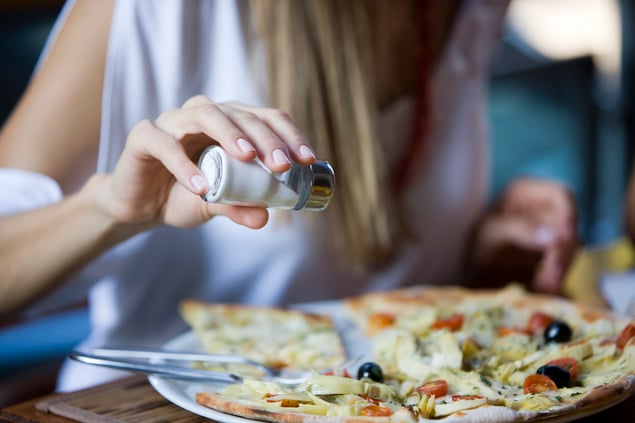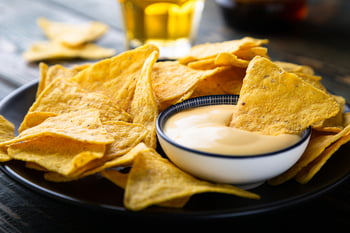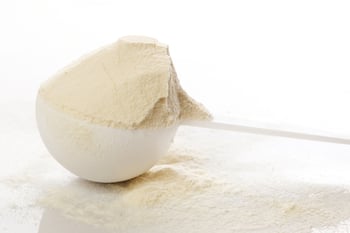
Messages from medical professionals to their patients about the importance of reduced sodium consumption are nothing new. They often cite processed foods as the villain, calling out canned soups, cheesy sauces and other shelf-stable products in particular.
Up until recently, the food and beverage industry has been relatively slow to introduce lower-sodium products. Many cite the challenge of formulating products that perform and taste as good as the original. Consumers simply won’t sacrifice the flavors and textures they’ve become accustomed to.
Food scientists and R&D professionals know that sodium chloride (common table salt) doesn’t just impart flavor. Sodium affects a food’s availability of water, impacting texture and preventing the growth of organisms that can affect food safety or lead to spoilage.
Related Food Business Review Article: Impact of Sodium-based Food Preservatives
In other words, sodium is a functional ingredient.
Formulating reduced-sodium options that taste as good as the original and check all the boxes for food safety, flavor, texture, cost savings and clean labels has been a formidable task.
New ingredient innovations are starting to change all that.
How Much Sodium Is Too Much?
To reduce risks of high blood pressure, heart disease and stroke, the Centers for Disease Control and Prevention (CDC) recommends no more than 2,300 mg of sodium per day as part of their dietary guidelines for Americans. To put that in perspective, a single cup of cheddar broccoli soup at one popular restaurant chain contains about 1,000 mg of sodium — nearly half of the recommended daily allowance. Other popular menu items with high sodium include:
- Cheese-based appetizers (820 mg)
- Cheese-based dips and spreads (946 mg)
- Processed cheese/cheese food (1,351 mg)
*Per 100 grams
It’s no wonder Americans each consume a daily average of more than 3,400 mg of sodium. When told to reduce sodium levels, many consumers put down the salt shaker, but that’s not where the majority of sodium in their diets comes from. According to the CDC, more than 70% of sodium consumption comes from processed and packaged foods and restaurant meals like soups, pizza, cured meat, snacks, cheese and other savory dishes.
The issue of salt consumption is so pressing that Member States of the World Health Organization (WHO) called for a 30% global reduction of salt intake, with a target of less than 2,000 milligrams of sodium per day by 2025. Their latest findings show that the world is off-track and that a massive collective effort will be needed to comply.
Related Resource: Guide to Increased Consumer Demand for Reduced Sodium
Sodium Alternative Challenges in Food Products
Number one on WHO’s intervention strategy is “reformulating foods to contain less salt, and setting targets for the amount of sodium in foods and meals.”
Sodium chloride reduction in foods, however, typically requires replacing a portion of salt with another ingredient to make up for the lack of flavor and functionality. Some alternatives include potassium, magnesium or calcium chlorides, yeast extracts, or monosodium glutamate. An issue with many sodium alternatives, however, is that they may require flavor maskers to cover bitter or sour notes.
Other alternatives include adding authentic sodium chloride flakes as a topping on snacks which increases the surface area of the ingredient to create the perception of saltiness.
A natural alternative includes powdered dairy ingredients like reduced lactose whey, which effectively reduces sodium in cheese sauces without compromising flavor or structure. Hydrolyzed whey proteins can partially replace phosphates in meat seasonings and herb and spice blends to retain moisture and flavors in processed meat applications. These dairy ingredients help enhance umami due to their naturally occurring minerals including calcium and phosphate.
Ingredient Innovations in Cheese Sauces Give Formulators the Edge
Despite challenges, food manufacturers continue to pursue efforts to reduce sodium in their formulations to capture a portion of the reduced sodium market and provide healthier products. Ideally, a formulation’s flavor, texture and price point will appeal to all consumers, not just those seeking improved nutrition.
Formulations containing fresh, processed or powdered cheese represent a market segment where sodium reduction without compromises is achievable. Examples include cheese soups, sauces, macaroni and cheese, cheese-filled pastries and other savory foods.
Grande Gusto®, an all-natural ingredient innovation made from whey that is generated as part of the cheesemaking process, allows formulators to reduce the use of cheese by as much as 50% while also reducing sodium by 10%. What’s surprising to many formulators is that this alternative actually performed better than the control for taste, creaminess and nutrition in macaroni and cheese. Taste test panels perceived the Grande Gusto cheese sauce formulation to have equal or greater salty notes even though the actual sodium content was reduced.
Formulators and customers alike appreciate that products containing Grande Gusto can maintain their clean-label status. The only ingredient that needs to be listed on labels is “reduced lactose whey,” which is recognized and accepted by consumers.
Request a Sample of Grande Gusto
A lot of ingredient manufacturers tout their products as a solution, but few deliver the results that food and beverage manufacturers hope for. See for yourself just how functional and flavorful Grande Gusto can be in your reduced sodium cheesy application. Connect with our food scientists today for a complimentary sample to see and taste for yourself.




